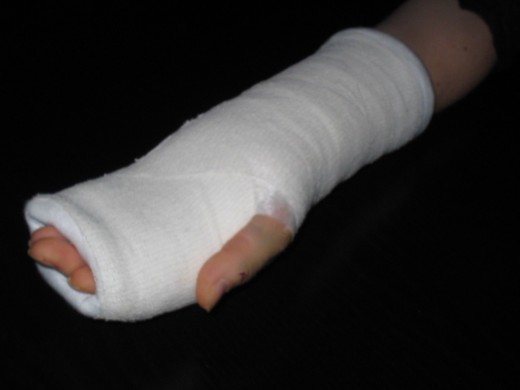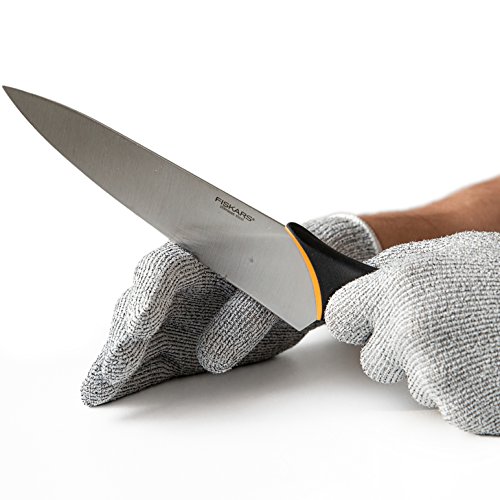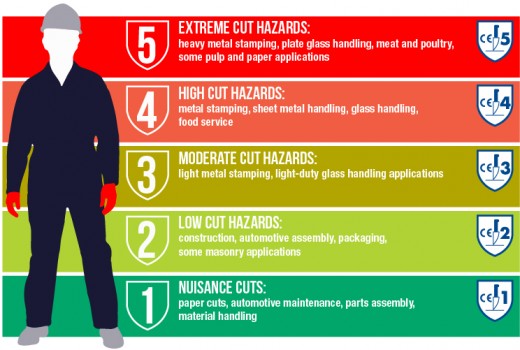Shield Your Hands with Cut Resistant Gloves.

As a child, growing up, I had to help do chores around the house. Some chores required me to use a knife or handle fragile objects. I can remember the many cuts and bruises I gained when I made clumsy mistakes when performing those tasks. Some were quite painful, some were painless, but they always left scars. I still have some of those scars to this day. Perhaps you have the same or similar experiences while growing up or while attempting to do the chores around the house as an adult. For many working in the food, metal, and glass industries the threat of sustaining an injury while on the job is present every day.
Data from the Centers for Disease Control and Prevention (CDC) shows that 1,080,000 emergency department visits are made by workers who have hand injuries. Most of these injuries could have been prevented had the right protective gear been worn. So what can you do to prevent yourself from obtaining injuries and the scars that come with it? Wear protective gear!! Brilliant, right? I’ll even let you in on a little secret. You can protect your hands from being butchered by wearing resistant gloves. I wear them whenever I do chores that might give me a lasting souvenir. Don’t feel up to using a band-aid or making a hospital visit when your hand slips? Then you should use cut resistant gloves. Cutting up veggies for the next meal? Use cut resistant gloves. Handling glass or ceramics? Use cut resistant gloves.

What Are Cut Resistant Gloves?
What are cut resistant gloves you ask? Yeah I know it sounds a bit insane, how can gloves be cut resistant? You’re probably thinking of that pair of cotton or natural rubber glove you own, and you should know by now that placing a sharp blade on top of these and applying a fair amount of pressure to it would cause those gloves to tear. I’m sure that’s not your idea of the term cut resistant, but don’t worry not all gloves are created equal. Cut resistant gloves are made from various materials and come in a variety of shapes and sizes. Some such materials include but are not limited to Kevlar, Dyneema, engineered yarns, stainless steel. They are meant to protect against abrasive cuts (gained by rubbing against sharp or jagged edges), slicing cuts, and impact cuts (gained when a falling piece of glass or metal sheet strikes the skin). The cut resistance of a glove depends on the strength, hardness, slickness and rolling action of the materials used.
Hard or strong materials do not resist tearing or breaking when a blade or sharp object passes over them. Slick materials allow a blade to slide over a surface without cutting through while materials with rolling action do pretty much the same thing but the difference is that the material rolls when a blade slides over its surface. Cut resistant gloves are given a grade from 1-5 based on the level of cut protection they provide it with 5 of course being the highest level of cut protection currently available.
Kevlar
Your leather glove though great for protecting against abrasions is a poor choice in the fight against cuts. It offers protection equivalent to that of the skin on your body, which by now you should know doesn’t do all that well against abrasions. Kevlar, on the other hand, has five to ten times the cut protection of leather. Developed in the 1960s by DuPont, Kevlar has proven to be a very useful material. It is used in racing sails, tires, and even bullet proof vest. Weight for weight Kevlar is 5 times stronger than steel and has a cut resistance level of 3. Along with being great at protecting against cuts Kevlar gloves also happen to be heat resistant so it can be used in environments that are exposed to heat. It was at one point the number one material used in cut resistant gloves but as time passed technology advanced and stronger more cost effective materials were developed.
Dyneema
Dyneema, a synthetic polyethylene fiber, has cut resistance levels of 3-5. Developed over 20 years ago by a company called DSM Dyneema commercial production of Dyneema began in 1990. Weight for weight Dyneema is fifteen times stronger than steel and 40 percent lighter than Kevlar. So what does this mean for you? Well, because of its superior strength and low-density Dyneema gloves will provide more protection while still managing to be comfortable. The comfort it provides means you are less likely to forgo wearing the glove and chance serious injury. Dyneema also resists moisture, ultraviolet light, and chemicals so the pair of gloves you buy will last longer and save you money in the long run. Like Kevlar, Dyneema is also resistant to heat so it can be used in environments where there is exposure to heat.
Engineered Yarns
How do you improve upon the cut protection Kevlar and Dyneema fibers provide? You incorporate other materials into the glove that have attributes that lend to cut resistance but are not provided by Kevlar and Dyneema fibers. And that is exactly what engineered yarns are, a composite of two or more different materials. Kevlar and Dyneema fibers provide strength and slickness while stainless steel provides hardness. When woven together the two materials work together to accomplish what one alone can’t: they give the glove rolling action. This allows manufacturers to produce a glove with higher cut resistance but that is comfortable to wear.
Metal Mesh
Metal mesh gloves are made up of interlocking metal rings but they aren’t a relatively new invention. In fact, the glove’s conception began in the middle ages when chain mail was being used by knights as protective armor whenever they jousted or did battle. Today metal mesh gloves are no longer just for knights hoping to earn honor on the battlefield but for the mere commoner who handles sharp knives. In the 1980s most manufacturers made the switch to stainless steel as their material of choice. Stainless steel is very durable and does not harbor bacteria. Stainless steel mesh gloves have a cut resistant rating of 5 and are the only gloves that protect against puncturing.

Which Cut Resistant Gloves Should You Wear?
Well, that would depend on the level of protection you need. You wouldn’t want to use a helmet to protect your head when a simple hat will suffice or vice versa. Latex, cotton, and leather gloves can be used when handling paper, doing automotive maintenance, and assembling parts. If you require a little more cut protection and you work in construction, electronic assembly, and hardware industries gloves made from synthetic polymers like nylon and polyester will do. Perhaps you work in the automotive industry or handle light-duty glass regularly. Gloves made from Kevlar or Dyneema are perfect for those working environments. Still need a bit more protection? In that case, I’d recommend using gloves we made from engineered yarns. They are ideal for food service workers, persons who handle metal sheets regularly, persons who handle glass, and persons who perform metal stamping. If you want the most cut protection that’s out there then you might want to invest in metal mesh gloves. These gloves are ideal for workers who cut and prepare poultry, heavy metal stamping, and plate glass handling. Just remember these gloves are cut resistance not cut proof there is a limit to the protection they can provide. Even mesh gloves cannot protect when using powered blades or saws with serrated edges.






